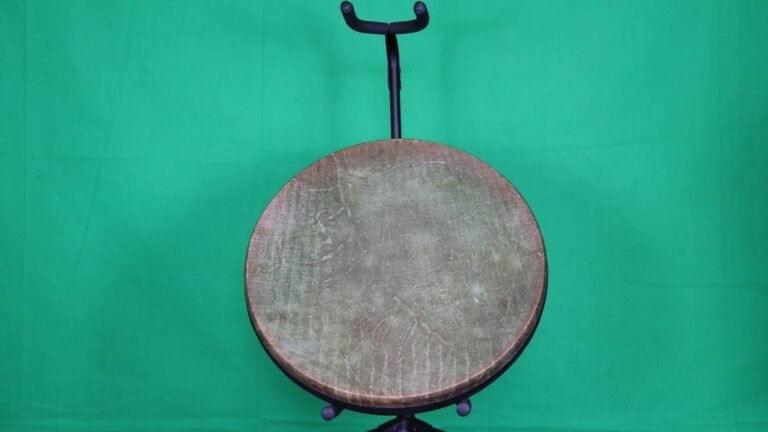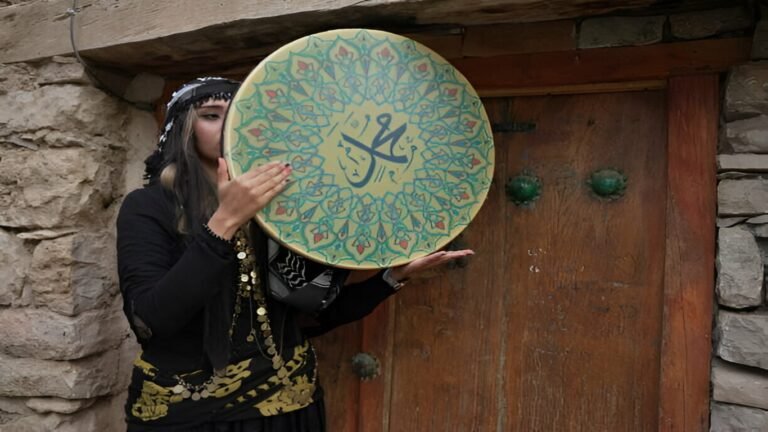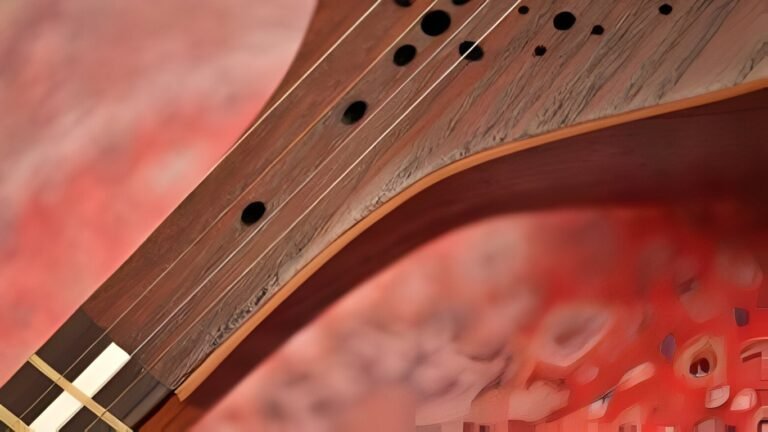Persian drum beats music set the pace for Persian traditional music. Daf, Tombak, and Azeri Dayereh are three types of Persian drums, so All of these percussion Iranian instruments are members of the membranophone family.
Daf and Dayareh are employed in various social circumstances, from Persian classical music to street entertainment. Dayareh has played an essential role in traditional and popular Azeri music. The Tombak (or Zarb) is a goblet-shaped, hardwood drum with a fuller sound than frame drums. Masters handcraft all Persian drums we sell. Aside from their high quality, the embellishments on our Persian drums are also visually appealing and reflect Persian culture.
Most Popular Persian Drum Rhythms + Video
We have 3 or 4 different rhythms in 6:
EVERYTHING IN 6
Pishdaramad (Prelude 6/4)
The 6 rhythm is exceptionally sluggish.
In reality, it can be divided into three or six pieces. It is possible to count it in any manner one pleases.
Reng 6/8
The most recognizable melody in Persian music is this one. The cadence is that of our dance.
Additionally, it exhibits a sway. This rhythm can be expressed in Western notation as 6/8, but it can also be calculated by dividing it by 3. 6/8 is the mathematical equivalent of 3/4. Indeed, the cadence remains consistent. We also use 3/4, representing 6 beats of 8 quarter notes in a single notation. Although the emphasis will vary, the standard notation is 6/8.
Additional musical patterns include 3+3:
2+2+2 or 3/4
The fast 6 is another well-known 6 rhythm, typically denoted as 6/16, which consists of 6 pulses of 16th notes. This is a significantly quicker cadence than the “reng” we use in our dance. “Chaharmezrab” is the Farsi word for this, which translates to “four strokes” or “four beats.” This is likely due to the melodic phraseology incorporated into the “Chaharmezrab” composition. When attempting to categorize the phrases in a traditional Chaharmezrab, one will notice that they are frequently grouped into words of four and eight measures.
At 08:10, a change in cadence and rhythm signifies the beginning of the Chaharmezrab; counting 1, 2, 3, and 4 on the beat reveals that the phrases are grouped as follows: 3+3+3+3. Two measures of 6/16 would be used to represent this.
An additional rhythm is 12/16. Technically, it’s not a six-rhythm, but according to my definition, it qualifies as a Chaharmezrab. The 12/16 is categorized as follows:
2+2+2+3+3
Additionally, 12/16 is mathematically equivalent to 3/4, and 3/4 can be expressed as 6/8. Everything depends on how the rhythms are subdivided. By dividing 12/16 by 2+2+2+3+3, the groove is established.
Zarbi
Zarbi could be applied to various even-numbered rhythms, including 2/4 and 4/4.
Regarding Pishdaramad 4/4 2/4
The pishdaramad is an instrumental intro that establishes the ambiance and presents the dastgah or maqam in performance. The phrase “opening” precedes the daramad. The suffix “pre” is “pish,” and “daramad” translates to “opening.”
Witnessing Mohammad Reza Lotfi perform the pishdaramad is an acceptable illustration of Persian rhythm in action. It is distinguished by a “lange,” or hobbling condition. It consists of adjusting the tempo and duration of rhythms following one’s emotions while performing and improvising live.
A concert recording titled “The Abu-Atta Concert” by Mohammad Reza Lotfi and Mohammad Reza Shajarian is an all-around excellent album to become acquainted with. This album exemplifies the “lange,” or rhythms that are hobbling. It is not a matter of strictly keeping time. The key is to experience the music. The entire album was, in truth, improvised.
Additionally, percussionists must develop the ability to maintain perfect time, follow the music, and anticipate the limp, cadence changes, and rhythmic shifts. iTunes users are encouraged to listen to concert recordings featuring Hossein Alizadeh and Madjid Khalaj in action, where they can be heard performing outstanding improvisations.
Zarbi 2/4
The 2/4 rhythms we encounter most frequently are identical to those described in the maqam world for Ayyub, Malfuf, and Wahda Mukallafa. Unfortunately, I am not familiar with the Farsi names for these. These rhythms are commonly denoted as “doh-zarbi” or “two-beat.”
ODD RHYTHMS
Some peculiar melodies are also incorporated into contemporary Persian music. They complement Persian poetry exceptionally well.
5/8 or 5/4
Two and three plus two equals five of our melodies. A tune in five typically has a moderate cadence.
7/8
Three plus two plus two equals seven rhythms.
10/8
An exact imitation of the Arabic tradition’s Jurjina melody is also employed. In 10 pulses, 3+2+2+3 is dispersed.
KURDISH RHYTHMS
The specific names for some lesser-known patterns in Kurdish music are distinct. Alternating between Malfuf and Wahda Mukallafa, they extensively use brisk 2/4 and dynamic 6/8 rhythms. Downloading albums by the Kamkar ensemble would be highly recommended; they represent the quintessential Kurdish musical family/ensemble hailing from Kurdish Iran. It is an investment that you will not come to regret.
Daf Rhythms (DAF):
The Daf consists of metal circles encased within a large frame drum. Rhythms frequently consist of complex and rapid patterns that fluctuate in tempo. Beats such as 6/8 and 8/8 are prevalent.
Different Types Of Drum Beats In The World
Drums, also known as membranophones, have long been employed as musical instruments. Their name comes from the drums making a sound when the membrane is struck with an object. This object could be a stick or someone playing the drums’ fingers. The membrane vibrates and emits a sound when struck. Drums come in a variety of shapes and sizes. There are numerous types of drums. Some of them are discussed further down.
Ashiko
This drum is cylindrical. This drum’s head is on the wide end, and the small end is open. It is usually constructed from hardwood and goatskin hides. This drum may be tuned using the ropes on the sides. People can play this style of drum using their fingers rather than drumsticks. This drum can create a wide range of tones and has a pleasing sound. Furthermore, this drum is traditionally from West Africa and is popular in nations like Cuba. The name of the drum comes from the African term ‘Ashiko,’ which symbolizes independence.
This drum has a long legacy in Yoruba culture, dating back to 9000 BC. It was always utilized in street parades and carnivals in ancient times. The Ashiko drum is a hand-carved drum with various styles and shapes. This drum comes in several variations. These are detailed below.
Basler Drum
This is a two-headed drum named after its birthplace, Basel. Basel is a city in northwestern Switzerland on the Rhine River. It is the third most populous city in Switzerland, with about 180,000 people. This drum is used in the Basel Carnival by around 2000 drummers. This drum is known as a Tambouren in German.
Bass Drum
The bass drum is a widely popular form of drum that is used in practically every band nowadays. These low-pitched drums come in a variety of sizes. This enables the creation of melodic music. This drum was imported from the Middle East and did not emerge from the many different types of drums available in Europe during the Middle Ages. When this drum was first utilized, it had rope tensioning. Screw tensioning gradually replaced rope tensioning. In addition, the shell was built of metal or aluminum rather than wood alone.
The skin of calves and horses is utilized to construct the drum’s head. A bass drum is almost always used as part of an orchestra in the current era. These drums are usually suspended from a solid frame in this setting. This allows them to be moved and positioned to the drummer’s liking. This drum, however, can also be placed on a stand. Today, bass drums used in orchestras have a 70-100cm diameter and a 35-55cm (roughly) deep shell.
Bongo Drum
Bongo drums are little drums that are typically used in conjunction with conga drums to generate melodic music. These drums are particularly popular in Latin American music. They are usually sold in pairs, with the giant drum known as ‘hembra’ and the smaller drum known as macho.’ ‘Hembra’ implies female, and macho denotes masculine. These drums originated in Africa and were introduced to South America by African slaves. Bongo drums have a high pitch and produce a beat-like sound. These drums are typically placed between the user’s knees.
The hembra is typically positioned right, while the macho is usually put to the left. This drum can be played with fingers, brushes, sticks, or palms. Because the music is used for dancing maneuvers such as the mambo, salsa, and conga, the beat of this drum has its roots in Latin American music. There are a few fundamental things to know before playing this drum. These are the seated position, the open tone, the slap, the heel tip movement, and the whole muted tone. Once these are learned, playing the bongo drums may be very simple.
Tabla
This is an Indian drum that is played using the heels of the hand and the fingertips. These drums are also typically sold in pairs of two. The smaller one on the right is constructed of wood and is known as a daya (which means right) or tabla. The larger one on the left is built of steel and is known as baya (which means left) or dagga. The tabla is most commonly used in vocal and instrumental music and dance.
The tabla is mainly used as a background instrument. However, tabla musicians frequently perform solo. The word tabla is derived from the Arabic word ‘tabl,’ which signifies drum. The modern tabla has a distinct playing technique. Professional tabla players can create a wide range of rhythms using this instrument. The time cycles are represented by drumming phrases known as thekha or metered beat. Both drums are around 10 inches tall. The left one is slightly smaller in size. The drum membranes are constructed of goatskin.
Pandeiro
This Brazilian drum is played with the fingers, thumbs, and palms. It is utilized in percussion sections, samba schools, capoeira, and as an auxiliary percussion instrument in commercial music. This drum’s head is mounted on a metal hoop with a diameter more significant than the shell rim it covers. The drum features a shallow, cylindrical wooden shell. It has six evenly-spaced metal piers. These metal piers are fastened to the sidewall.
The drum is played by holding the frame in one hand and beating it with the palm or fingers of the other hand. The cymbals on the sides make a faint jingle. ‘Pandeiro’ is a Portuguese word meaning ‘tambourine.’ The Pandeiro arrived in Brazil from Portugal around the 18th century. This happened sometime during the colonial period this drum’s shell measures around 10 inches in diameter. The shell is 1.9 inches deep. The drum’s flesh hoop and tension collar are approximately 10.6 inches, and the jingles are 2.2 inches in diameter.

Tambourine
This is highly similar to the Pandeiro. The jingles on this drum are called zils, and they are smaller than those on the Pandeiro. This instrument does not always have heads and may or may not be adjustable. The jingles on this drum can be in single or double rows. This drum is also from the percussion family and is composed of wood or plastic. They occur in various forms and sizes, the most common of which is circular. This drum is utilized in many different types of music, including Turkish, Greek, Italian, classical, Persian, and Gospel. It was known as ‘tof’ in Egypt. The instrument was primarily utilized in religious settings.
‘tambourine’ has antecedents in both French and Arabic culture; ‘tambourin’ is a French word, and ‘tunbur’ is Arabic. The tambourine can be held in the hands or mounted on a stand. The tambourine can be played in a variety of ways. These include the standard strike technique, the thumb roll technique, and the shaking roll technique. No one way guarantees the best sound or music. It all depends on the individual playing the instrument. It is essential not to apply too much pressure on the tambourine, which can result in a muffled sound. The tambourine should be held softly, and the grip should be strengthened for ease of play.
Bodhran
This Irish drum can be played by hand or with tippers. Tippers are many sorts of beaters. These drums may or may not be tunable. This single-headed frame drum is frequently utilized in traditional music in Asia and India. This drum is used in Europe, North Africa, Iberia, Ireland, and Brazil. It is a simple drum without jingles. In most cases, it is just used as an accompaniment Instrument.
The diameter of this drum ranges from 25cm to 65cm, with deep sides reaching roughly 20cm. One side of the drum is linked to a goatskin head. Other animal skins are sometimes used for this drum by the Irish. However, goatskin is the most widely used. The other side of the drum is open, allowing the player to grasp the drum firmly. A hex key is embedded in the drum’s skin and allows the skin to be tightened or loosened. The skin must be drawn to the appropriate level for the drum to work optimally. This drum receives its name from the Gaelic term ‘bodhar,’ which signifies deaf.
Goblet Drum
This Middle Eastern drum is known as a darbuka. Because of its unique shape, it is known as a goblet drum. It is pretty old, originating in Egypt, Turkey, and Armenia. This drum is still used in Western music today. It is composed of wood or clay and covered in goatskin, tied with nails or ropes. This is a single-headed drum that has long been used for belly dancing. As a result, it’s also known as the belly dancing drum.
The darbuka, like any other musical instrument, has several strokes. Doum, ta ka, and pa are examples of basic strokes. To establish a certain rhythm, a musician must pay attention to the details of each of these strokes.
A person must be familiar with all these strokes to play this drum. There are several distinct types of darbuka. These include the Egyptian darbuka, Oriental darbuka, Turkish darbuka, and Arabian darbuka. To choose which is best suited to your playing needs, you must first learn about the various specialized elements of each.
Djembe
This is a popular hand drum with origins in West Africa. This drum can be mechanically or rope-tuned, and the head can be constructed of goatskin or synthetic material. This drum was named after the Bamana of Mali, who used to say, ‘Anke dje, anke be.’ ‘Dje’ means to collect, and ‘be’ indicates everyone. This drum is typically 23 to 25 inches tall and features a distinctive pattern.
The drum is goblet-shaped and made from a single piece of tree trunk. It has a bowl-shaped chamber in its upper portion responsible for producing the low sound produced by the bass strokes. These are formed by striking the center of the drum with your hand. The lower section is narrow and elongated, projecting the loudness of the played tones. The drum must be tuned to perfection for the sound to be perfect.
Persian Drum Loops Samples(Sounds)
What Are The Different Persian Drum Beats Types?
In Iranian music, three primary styles of Persian drum beats are popular and widely used. They are as follows:
Daf
When played, a huge frame drum with metal rings or chains affixed to the inside of the hardwood frame creates a jingling effect. When struck with the hand, a thin membrane made of fish, goat skin, or synthetic material generates a loud and resonant sound.
Sufi music and ceremonies, as well as Kurdish, Azerbaijani, Armenian, and other regional music forms, frequently employ the Daf. The Daf is a national musical instrument of Pakistan and Azerbaijan, appearing on both banknotes.
Tonbak
A goblet-shaped drum with a single animal skin membrane stretched across the wooden body’s widest part. The tonbak is played using both hands’ fingers and palms, producing a range of tones and rhythms.
Tonbak is the primary percussion instrument in Persian classical music, and it is frequently performed alone or in an ensemble with other Iranian instruments such as tar, setar, kamancheh, and santur. Many prominent performers, like Hossein Tehrani, Mohammad Reza Lotfi, Mohammad Akhavan, and Pejman Hadadi, play this instrument, which needs an excellent level of ability and proficiency.

Dayereh Azeri
A frame drum similar to the Daf, but smaller and lacking metal rings or chains. The Azeri dayereh is played with the fingers or a mallet and features a hardwood frame and a skin membrane. The Azeri dayereh is most commonly heard in Azerbaijani folk music, particularly in the mugham genre.
The Azeri dayereh can produce intricate rhythms and melodies, and it is frequently accompanied by other Iranian instruments such as the balaban, tar, kamancha, and gaval. The Turkish and Caucasian musical traditions have inspired Azeri Dayereh, which has many great players such as Mirza Mansur Mansurov, Habil Aliyev, Alim Qasimov, and Bahram Mansurov.
Bottom Line
A cultural legacy abounds within the fabric of Persian drum beats, a tapestry of rhythms that surpasses geographical and temporal boundaries. The appeal of Iranian music is indisputable, whether one delves into the customary rhythms or embraces contemporary interpretations. With the ongoing influence of prominent drummers such as Ali Massoudi and Padideh Ahrarnejad, the trajectory of Persian drumming appears filled with potential for groundbreaking developments.
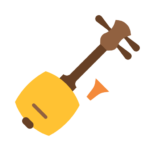 String Instr
String Instr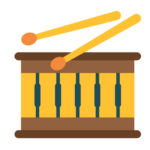 Percussion Instr
Percussion Instr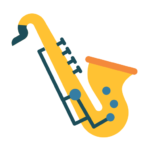 Wind Instr
Wind Instr Keyboard Instr
Keyboard Instr Tools
Tools Books
Books